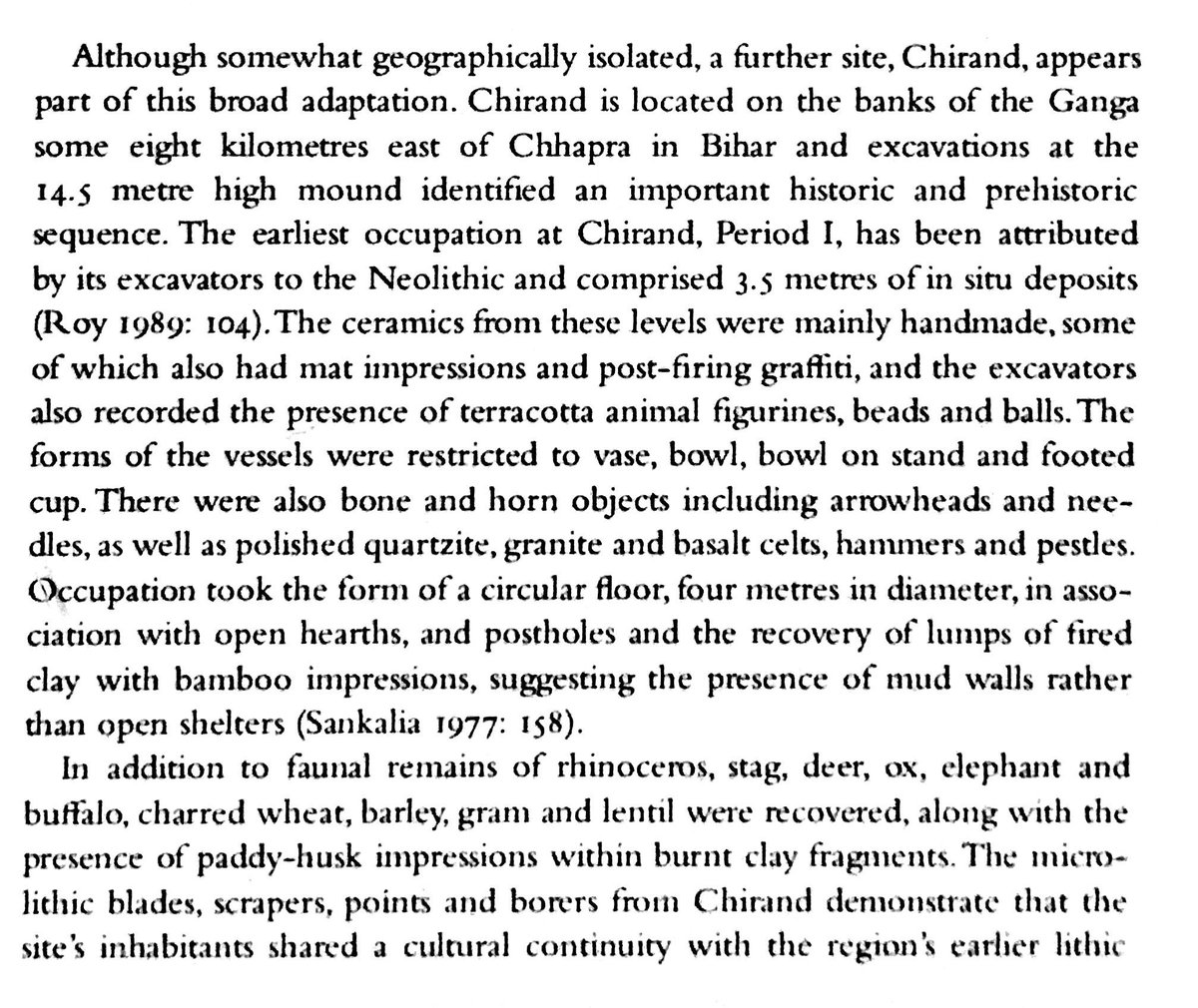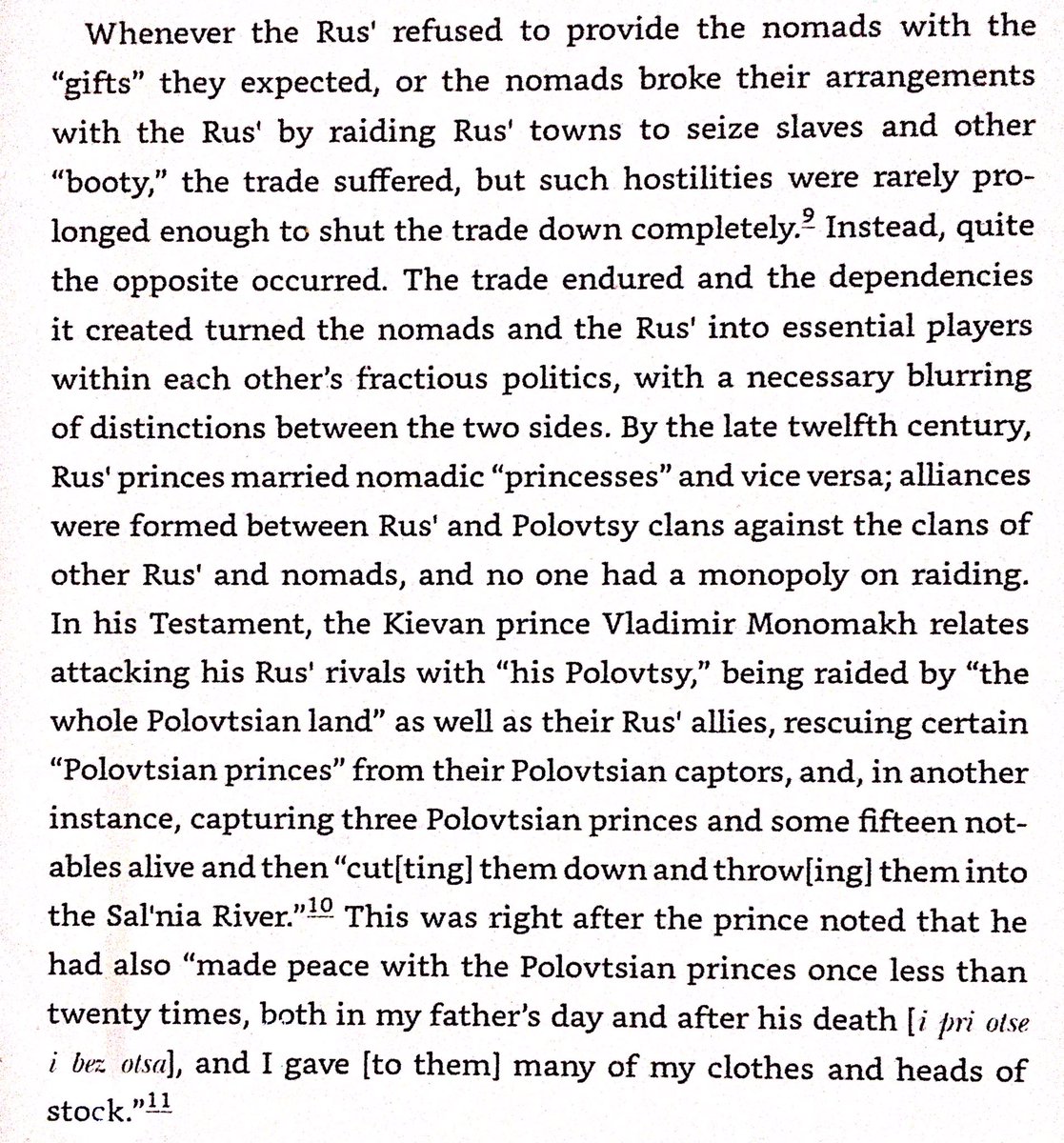
Thread with excerpts from “The Archaeology of South Asia: From the Indus to Asoka” by Robin Coningham and Ruth Young 

India gets two monsoons - the southwest monsoon from June through September, & the northeast monsoon from October through December. 8000-6000 BC there was a change in monsoons that led to warmer & wetter India, sparking development of animal domestication & sedentary lifestyles. 



Nilgiri Highlands in Tamil Nadu were wetter and warmer in last Ice Age. Region has gotten dryer since 8000 BC. 



Indo-Gangetic Plain was a savannah with scattered forests. Farming developed in the Plain between 7000-6500 BC. Also possible abortive neolithic around 11,000 BC in Horton Plains of Central Sri Lanka. 







Authors description of what makes a society a Neolithic society: farming, use of domesticated animals, sedentary lifestyles, pottery, & relatively advanced stone tools with no metal. 



Use of red ochre in earliest Mehrgarh burials is interesting example of cultural convergence. Proto-Indo-Europeans in Ukraine, Iron Age Berbers in Libya, Toharian people from Kroraina, & Mayans in Yucatán all used red ochre for burials, & clearly were not in contact. 

Loebanr III & Kalako-deray sites in Swat Valley (~1700 BC) had jade beads & harvesters, artifacts characteristic of the Yangshao culture of Yellow River basin in China. 





Neolithic civilization in Ganges River basin in eastern India, Nepal, Burma, & Bengal that derived from previous mesolithic hunter-gatherers. The civilization isn’t well dated, only good radiocarbon date from a site from the civilization is 2000 BC. They had stone axes & rice. 







Domestic sheep near Kothari River in Rajasthan in 5th millennium BC. 3rd millennium BC Gujarat & Rajasthan had farming & herding - disputed if it was due to settlers from Indus River Valley Civilization or local hunter-gatherers who adopted that lifestyle from the west. 



Karnataka by 2300-2200 BC had domesticated several local plants for farming. Then numerous sites there were abandoned in that period, many cattle stockades were burned in enormous fires, & new pastoral practices appeared in Karnataka with new settlements. 







Possible Neolithic farming society in Sri Lanka collapsed or reverted to hunting & gathering after climate change ruined agriculture after 5500 BC. Agriculture was reintroduced & metalworking was introduced after settlers from the subcontinent arrived after 900 BC. 



Gradual rather than sudden development of urban societies in Indian Subcontinent 6000 - 2000 BC. Some pottery shards show graffiti from proto-writing which was very different from the Indus Valley Civilization script. 







Baluchistan 4300-3500 BC had growing settlements made of mud bricks, & featured granaries & stores. Lapis lazuli, steatite, turquoise, carnelian, & seashells were all worked with pottery in specialized workshops. Glass was made at same time as Egypt & Mesopotamia. 





Baluchistan 3500-3000 shows signs of earliest irrigation channels in subcontinent, though debated. 3000-2600 population seems to have grown & social complexity increased. Monumental platforms (pyramids?) were built, & trade as far as Afghanistan & western India was conducted. 





Late 4th millennium BC Kandahar was linked by trade to Elam. Proto-Elamite writing on tablets has been found in Kandahar. 







3200-2600 BC Kot Dijian tradition emerged as unified pottery type across Indus River Valley & into Haryana & Rajasthan. They built walls around their settlements that were 6 m thick & 5 m tall. They had carts, bull figurines, & large brick platforms. Bricks were uniform in size. 





2800-2600 BC several Indus River Valley Civilization settlements were burned, & almost all were abandoned. Invaders from Baluchistan mixed with their predecessors & kept much of their material culture. After invasion, almost all settlements were built in virgin lands, not ruins. 





Indus River Valley Civilization’s “Era of Integration” 2600-1900 BC featured rise of large urban areas & cultural homogenization. IVC at the time was 20x size of Egypt & 10x size of Mesopotamia. Over 1000 known settlements from Era of Integration are known. 







Nomadic pastoral groups roamed the marginal parts of the IVC, but were economically integrated, probably bringing raw materials to the permanent settlements, then leaving with manufactured goods. 



Baluchistan coast under under influence of Indus Valley Civilization, but rest of Baluchistan remained culturally distinctive as the Kulli Culture 2500-2000 BC. 



Sumerians called Bahrain “Dilmun”. It was a center of trade in 3rd millennium BC for Mesopotamia, Iran, Oman, & the Indus Valley. 150k tumuli tombs were built there. Sumerians viewed it as very wealthy. 





Little evidence for sea trade in 4th millennium BC in Arabian Sea & Persian Gulf. 3rd millennium did have sea trade though. Indus Valley Civilization artifacts & writing found in Oman, Bahrain, Khuzestan & UAE. IVC weights for trade measurements indicate extensive contacts. 







• • •
Missing some Tweet in this thread? You can try to
force a refresh














































